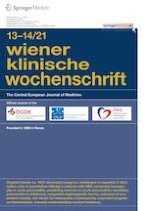Introduction
Material and methods
Study design and patients
Data collection
Data analysis
Results
Incidence
Perinatal and neonatal data
Parameters | Cases (n = 38) | Controls (n = 76) | p-value |
|---|---|---|---|
Gestational age (weeks) | 26.3 ± 2.2 | 26.3 ± 2.1 | Ns |
Birth weight (g) | 878 ± 313 | 894 ± 304 | Ns |
Gender (male: female) | 24 (63): 14 (37) | 47 (62): 29 (38) | Ns |
Small for gestational age | 8 (21) | 10 (13) | Ns |
Twins/triplets | 14 (37)/0 (0) | 22 (29)/1 (3) | Ns/ns |
Maternal age (years) | 30.1 ± 5.6 | 31.0 ± 6.4 | Ns |
Cesarean section | 29 (76) | 65 (86) | Ns |
Chorioamnionitis | 14 (37) | 26 (34) | Ns |
Apgar score at 1 min | 6.6 ± 1.8 | 5.8 ± 2.3 | 0.040 |
Apgar score at 5 min | 8.1 ± 1.3 | 7.9 ± 1.7 | Ns |
Umbilical artery pH | 7.32 ± 0.07 | 7.29 ± 0.12 | Ns |
Length of stay (days) | 122 (33–217a) | 83 (20–168b) | < 0.001 |
Mechanical ventilation (days) | 30 (6–125a) | 18 (1–91b) | 0.013 |
Early onset sepsis | 8 (21) | 11 (16) | Ns |
RDS | 29 (76) | 64 (84) | Ns |
RDS grading (1–4) | 3.0 ± 1.0 | 2.3 ± 1.2 | 0.003 |
Surfactant | 28 (73) | 59 (76) | Ns |
Doses/infant | 1.3 ± 0.6 | 1.1 ± 0.3 | 0.002 |
Intraventricular hemorrhage Mild IVH Severe IVH/PVHI | 13 (34) 11 (29) 2 (5.3)c | 22 (29) 9 (12) 13 (17)c | Ns |
PVE/cystic PVL | 4 (11)/3 (8) | 7 (9.2)/4 (5.3) | Ns/ns |
Neonatal seizures | 5 (13) | 4 (5.3) | 0.072 |
Late onset sepsis | 21 (55) | 16 (21)c | < 0.001 |
Bronchopulmonary dysplasia | 4 (11) | 14 (18) | Ns |
ROP | 7 (18) | 11 (15) | Ns |
ROP grading (1–5) | 2.7 ± 1.1 | 0.5 ± 1.0 | < 0.001 |
Analysis of GIT perforations
Localization of perforation | Cases (n = 38) | Causes |
|---|---|---|
Esophagus | 1 (3) | Iatrogenic |
Stomach | 1 (3) | Iatrogenic |
Small intestine | 31 (81) | – |
Ileum, singular | 27 | MOP (n = 17), SIP (n = 6), NEC (n = 3), Meconium ileus (n = 1) |
Ileum, multiple | 3 | NEC (n = 2), Volvulus (n = 1) |
Jejunoileal passage | 1 | NEC |
Large intestine | 4 (10) | – |
Appendix, singular | 1 | Volvulus |
Left colic flexure, singular | 1 | MOP |
Sigmoid colon, singular | 2 | Iatrogenic (n = 1), SIP (n = 1) |
Unknown | 1 (3) | MOP (death, no autopsy) |
Mortality
Follow-up and outcome
Follow-up | Cases (n = 38) | Controls (n = 76) | p-value |
|---|---|---|---|
Deaths | 4 (11) | 11 (17) | Ns |
Follow-up at 2 years | 33/34 (97) | 65/65 (100) | Ns |
Normal development | 16 (49) | 26 (40) | Ns |
Cognitive/motor deficits | 17(51) | 39 (60) | Ns |
Cognitive deficits | 17 (51) | 39 (60) | Ns |
Development delay | 14 (42) | 33 (51) | Ns |
Mental retardation | 3 (9) | 6 (9) | Ns |
Motor deficits | 2 (6) | 7 (11) | Ns |
Athetosis | 1 (3) | 3 (5) | Ns |
Cerebral palsy | 1 (3) | 4 (6) | Ns |
Microcephaly | 9 (27) | 8 (12) | 0.036 |
Dystrophy | 14 (42) | 15 (23) | 0.027 |
Visual impairment | 4 (12) | 9 (14) | Ns |
Hearing impairment | 0 (0) | 0 (0) | Ns |
Seizures | 1 (3) | 1 (1.5) | Ns |
Behavioral disorders | 4 (12) | 4 (6) | Ns |
